Features of planting berry yew and caring for it in the garden
The perennial evergreen yew (yew) berry is an amazing ephedra, loved by landscape designers and gardeners. Non-standard appearance, ease of planting, unpretentious care, life expectancy - this is not a complete list of the advantages of a tree. Berry yew is also called mahogany, greenery, non-iron, often under these names nurseries grow and sell seedlings. The life span of a mahogany is measured in millennia - in Scotland, in the village of Fortingall, a tree grows, the age of which is estimated at 2.5 thousand years.
Description and varieties of berry yew
Greenery rarely grows above 20 m, because grows very slowly - hardly a meter per season. Garden varieties are limited to a height of about 2.5 m.The wide crown is formed by soft branches covered with dense green needles up to 3.5 cm long.It is noteworthy that at the end of spring flowering it forms not cones, but drupes, which in autumn acquire a bright red color ...
The following varieties are common.
- Elegantissima - in 10 years it grows up to a meter in height, forms a crown with a diameter of one and a half meters. The needles of a greenish-white color, often with a yellow tint, are 2 cm long. The young tree grows extremely slowly, only after reaching 6 years the growth rate increases to 25 cm / year. Representatives of the variety tolerate shady places, are frost-resistant.
- Summer gold - a low compact bush, up to a meter in height and crown diameter. The yellowish needles acquire a golden color by the middle of summer. It grows equally well in the shade and in the sun, tolerates frost well.
- David - height up to 2 m, crown diameter 70-80 cm, yellow needles. Loves well-lit places.
- Repundens - the maximum height is about 5 m. The crown is spreading, asymmetrical by nature, the branches are curved. Annual growth is 8-10 cm. The variety is grown in sunny places, watered regularly.
- Fastigiata - undersized trees, up to one and a half meters. The crown is columnar, the needles are dark green. Lover of moisture, dressing, heat. Winter shelter is required in temperate latitudes. One of the few varieties of berry yew, adapted for living in urban environments.
Remember: all parts of the yew berry are poisonous, except for the pulp of the fruit. All work with him is carried out using protective equipment.
Planting yew berry
Greenery varieties vary in growing conditions, some like shading, others need good lighting. When buying a seedling, this point must be checked with the seller. Lowlands, as well as places where melt or rain water accumulates, are categorically unsuitable.
Planting dates are early spring only.
Yew soil must meet the following parameters.
- Lightness, nutritional value, excellent drainage. The optimal composition is peat, river sand, sheet soil (2: 2: 3). Sandstones and clayey soils require upgrading.
- The pH is not critical, but a neutral or slightly acidic reaction is preferred. If in doubt, the characteristics of the soil are checked with the seller.
- The soil should not contain heavy metal salts, construction waste, household waste.
The planting hole is dug with a depth of 60-70 cm and a diameter of a slightly larger earthen clod of the seedling. On heavy soils, 20 cm of drainage must be placed on the bottom - broken brick, tracing paper, gravel, expanded clay. For planting a single-row hedge, the depth of the trench may be slightly less - about half a meter, for a two-row hedge - 70 cm.
It is optimal to maintain the distance between seedlings 2.5 m, in hedges - from 0.5 m.
The process of planting a berry yew seedling is simple. The soil extracted from the hole is mixed with peat and sand, the soil mixture is spread in a small layer on the drainage, forming a small mound in the center. Fertilizers do not need to be added.
The seedling is placed in a pit on a mound, the roots are spread along the slopes. The root collar should be at ground level. The pit is filled with soil mixture gradually with simultaneous compaction, not too strong.
The planting is completed by watering, then the trunk circle is mulched with a 10-centimeter layer of sawdust. At the same time, make sure that the root collar remains open.
Greenery care in the garden
The special structure of the root system of the berry yew explains some of the nuances of caring for it. In an adult plant, it goes several meters deep, providing the "owner" with moisture. The roots are covered with mycorrhiza (fungus root), which supplies minerals and trace elements.
Basic rules of care
- In the first 5-6 years of life, young yews are regularly watered, the norm is about half a bucket per plant every two weeks. At the same time, weather conditions are taken into account: in a drought, more water can be poured, in rainy weather they refuse watering: the plant does not like waterlogging. Older trees are watered only during prolonged dry weather.
- 2-3 times a month, the crown is cleaned of dust by spraying it with water.
- The root system of young plants requires aeration; the soil is loosened hectare 15 cm deep every two weeks.
- The near-trunk circle of young (up to a year) greenery must be mulched with sawdust or small chips.
- For the first two to three years, the yew needs shelter for the winter. Spruce branches are used for this purpose, laying them around the base. The twigs are tied and attached to the support, because in the cold they become brittle, even a light breeze can break them. You can use a frame structure covered with agrotextile for insulation.
- Young plants in spring can suffer from the bright sun, so they are protected with kraft paper or light sheds. This also applies to sun-loving varieties.
- The first pruning is carried out in the second year of life, in early spring. Broken and dry twigs are removed, the shoots are shortened by a third. Further, the trees are cut, taking into account the varietal characteristics.
- Young yews are fed with mineral fertilizers only in the first year of life - 70 g / m2 of the universal complex is applied once two to three weeks after planting.
- Fertilizing with organic matter is carried out twice a season: in the spring it is fertilized with rotted compost, in the summer - with a liquid mullein.
Fertilizers are best applied to pre-dug soil.
Diseases and pests
Too frequent planting, thickening of the crown or waterlogging of the soil provoke fungal diseases characteristic of conifers: brown schute and fusarium.
Brown shute - shoots are covered with black mycelium, very similar to a spider's web. At the same time, the needles hold on for quite a long time, without changing color or crumbling. To combat the defeat, fungicides are used, eliminate the cause - regulate watering, thin out the crown.
Fusarium - the needles acquire a brown color, fall off. Treatment is carried out with special targeted drugs: Agat-25, Fitosporin-M, Baktofit, Fundazol, Topsin-M.
Against sap-sucking parasites - ticks, aphids, scale insects, bedbugs - the tree is treated with a wide range of insecticides in early spring.
Caterpillars of spruce leaf rollers and pine scoops are destroyed with special chemicals.
Chemicals can be used if the greenery does not coexist with fruiting crops. Otherwise, use folk remedies based on soapy water.
Reproduction of berry yew
As experts joke, yew can be propagated in two ways - long-term ineffective or fast productive. The first means growing a tree from seeds, the second way is grafting.
Growing from seeds
There are several reasons for the low efficiency of seed reproduction.First of all, the sown seeds do not just germinate for a long time - they wait for the emergence of seedlings from a year to 4 years, they germinate unevenly, i.e., the final result is unknown. The second reason is that greenery is a heterosexual plant, and for pollination of nondescript male flowers blooming in spring, it takes two trees, male and female, of "solid" age - more than 20 years. The third is the need for seed stratification, which lasts about a year.
Algorithm for growing redwood from seeds
- The fruits are harvested in autumn, when the shell begins to turn red on the fruits. Then for a short time they are soaked in water to cleanse the seeds from the pulp.
- The cleaned seeds are dried and stored in the refrigerator for stratification until the next fall. The process involves alternating exposure to cold and heat, so the sack of seed is periodically moved to heat (about 20 ° C). Once the seeds have hatched, they are left in a relatively warm place.
- Seeds are sown in protected ground - a greenhouse or greenhouse. They do not make holes or grooves, they simply scatter seeds over the surface and mulch with dry coniferous litter. Peat, straw and other options familiar to gardeners are not suitable for yew.
- The seedlings are grown in greenhouse conditions for 2 years, then they are planted in the beds. They take care of them according to the general method.
Propagation by cuttings
It is interesting that when buying seedlings of yew berry in the nursery, it is not always possible to determine exactly what shape an adult tree will take. It turns out that the outline of the crown depends on the location of the shoot from which the cutting is taken:
- The lower horizontal branches produce a sprawling, bush-like plant;
- Shoots growing upward will form a columnar crown.
Plants that are 3-5 years old are suitable for cuttings. Planting material from such trees takes root well without the use of additional funds. Cuttings from young greens take a long time to take root. Cuttings taken from old trees must be treated with growth stimulants.
For self-grafting of berry yew, the following method is recommended:
In autumn, when the fruits are fully ripe, cuttings are cut from 15 to 20 cm long, having several lateral branches. The lower part is cleaned of needles, the cuttings are placed in a solution of a root stimulator for a couple of hours.
The rooting substrate is made up of two parts of peat and one part of sand. At the initial stage, the total capacity is suitable for cuttings.
Rooting occurs under normal conditions - room temperature or slightly lower, there are no special requirements for humidity and daylight hours. The average duration of the process is two weeks.
February or March is the time for planting mature seedlings in separate pots. With the onset of steadily warm weather, young plants are planted in the open air.
Young yew trees acquire full decorativeness at the age of 7 years. This period can be shortened if the first two years of the seedling are spent in greenhouse conditions.
Reproduction by layering is also practiced, it is less troublesome than cuttings, but just as productive. To form layering, the lower branches are bent to the ground, secured and instilled. Completely the cuttings will form the root system and will be ready for independent life in 2-3 years.
A beautiful berry yew, which the ancestors called "the tree of life and death", is not difficult to grow on your site. Even the slow growth of the tree is its advantage, forming pruning is enough to carry out once a year. Ease of planting and easy maintenance, especially for an adult tree, increase its attractiveness. Decorativeness all year round, attracting pollinating insects in spring, improving the air - a worthy reward for the troubles associated with growing seedlings.
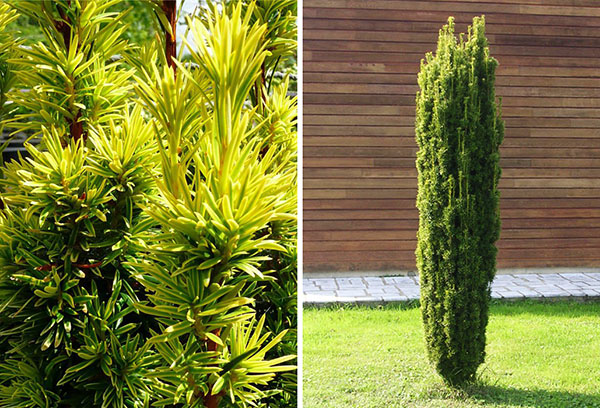
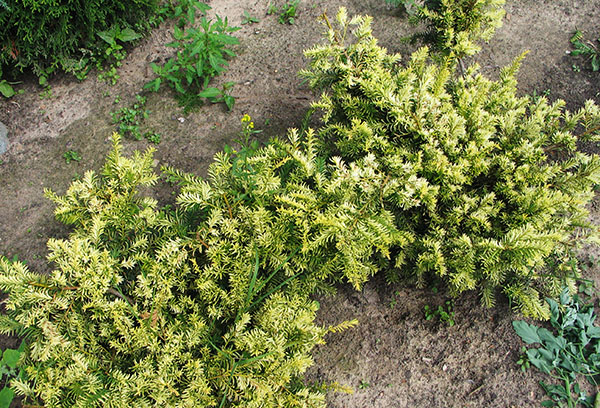
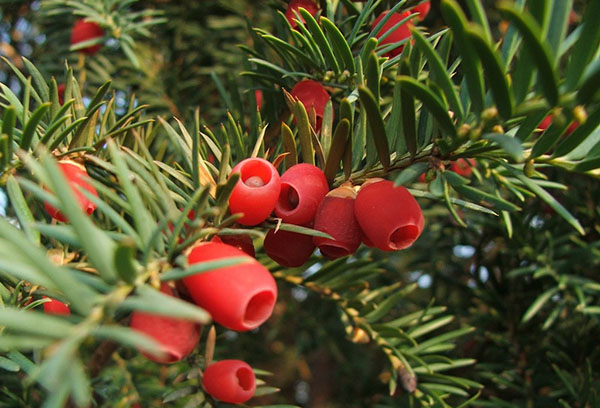
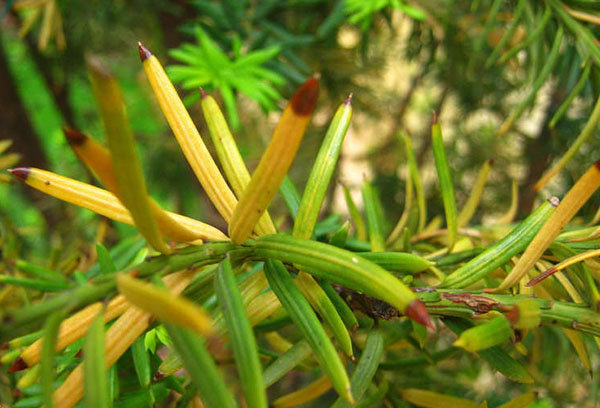
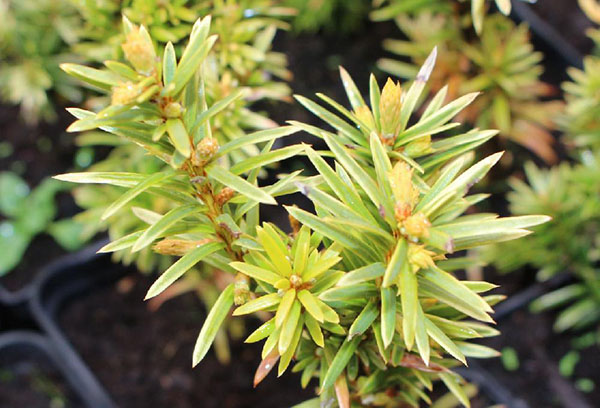

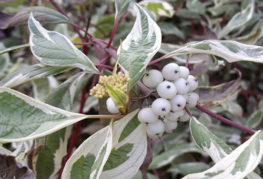
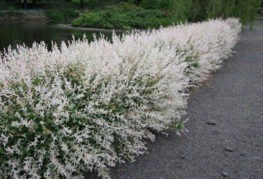
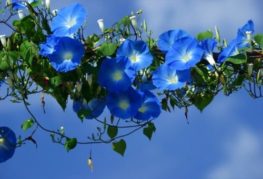
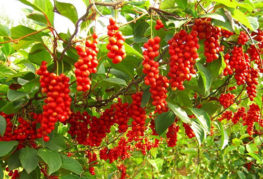
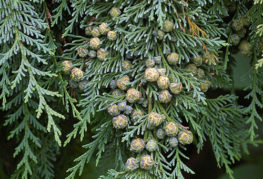
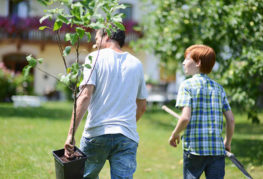
and will be published shortly.